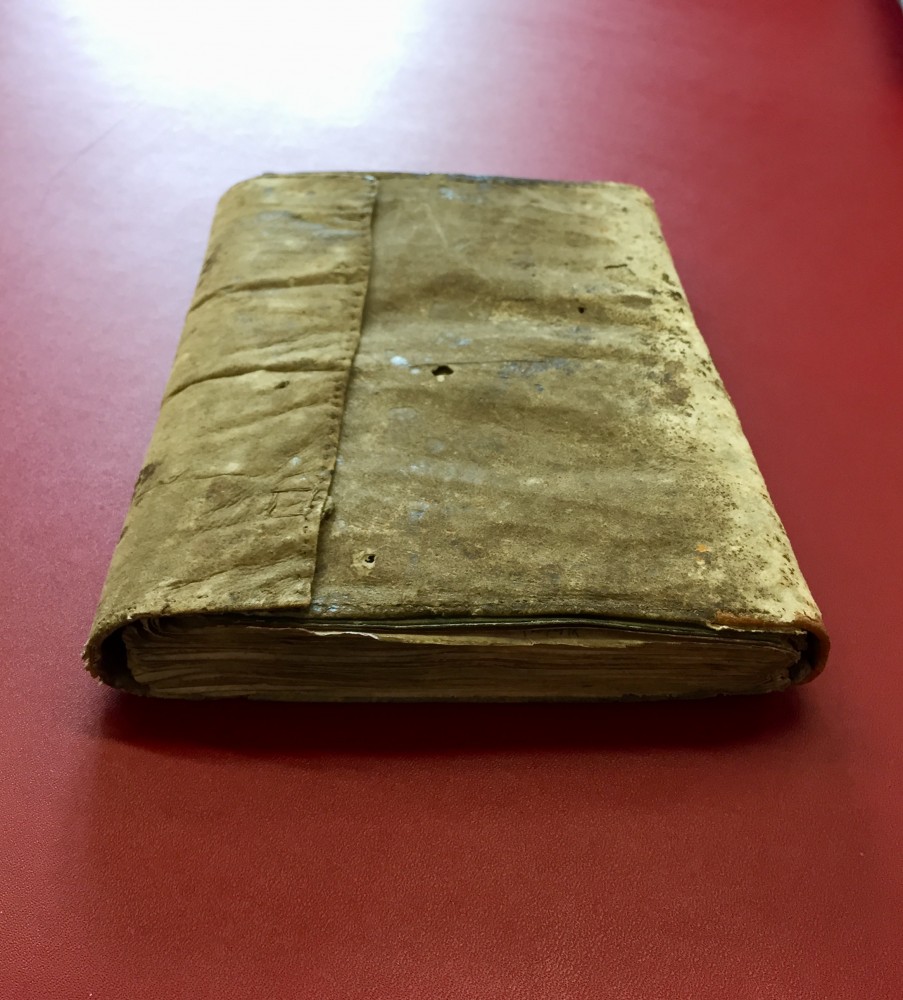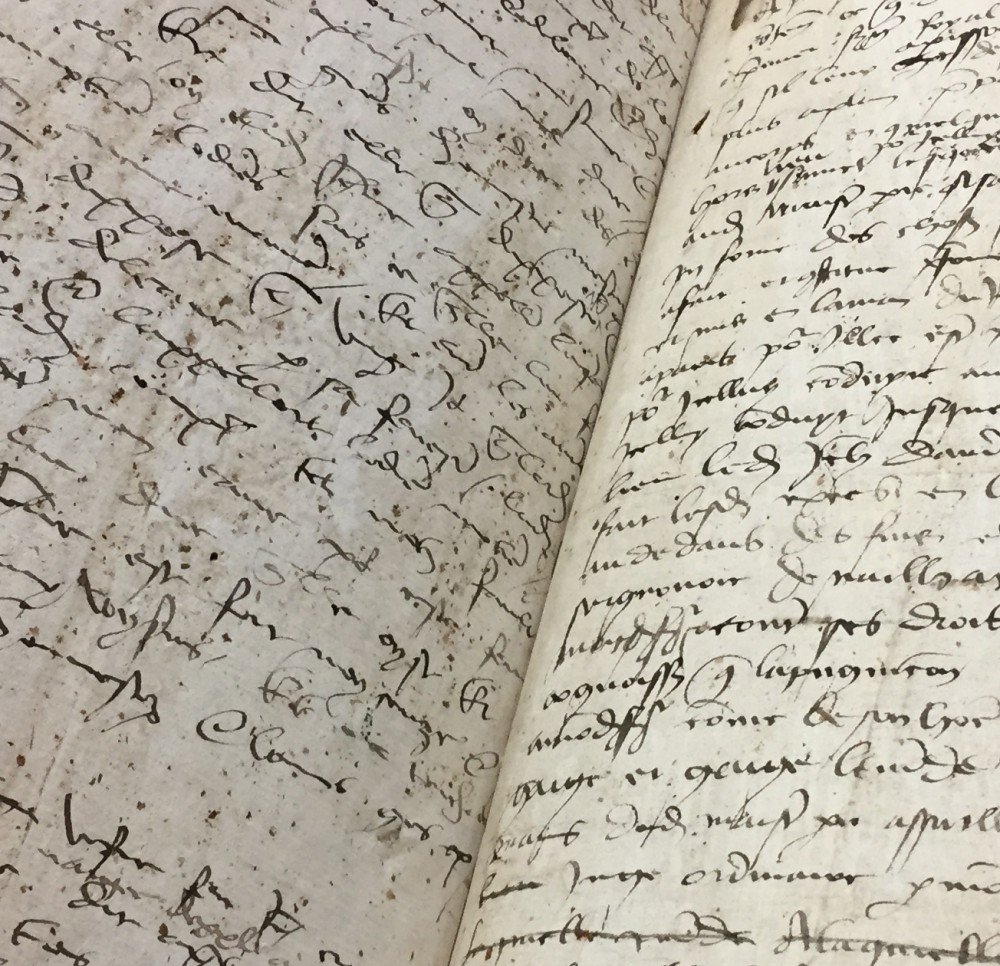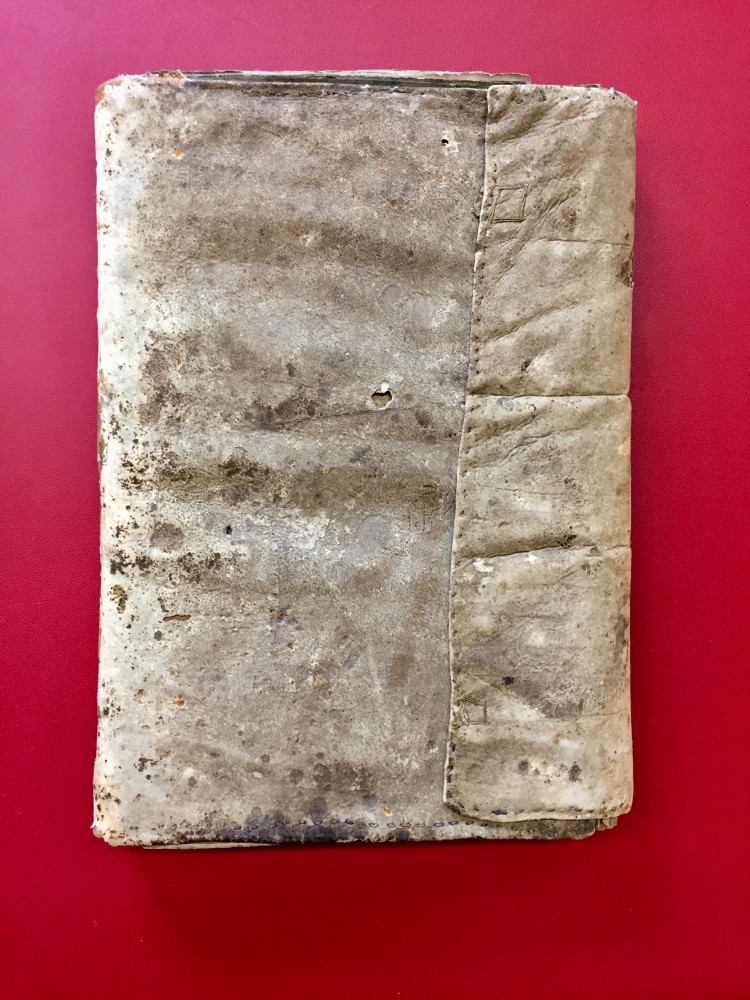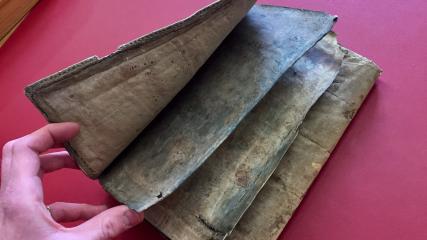Early Christopher Marlowe notebook discovered during kitchen works
Congratulations to those of you who spotted our April Fool’s. This is indeed not a recently discovered Christopher Marlowe notebook but actually one of the many wonderful manuscripts we have in our Parker Library at Corpus Christi College Cambridge.
Christopher Marlowe, alumnus of Corpus Christi College, was undoubtedly one of the foremost English playwrights and poets of the Elizabethan era. Marlowe studied at Corpus Christi in the 1580s and went on to write several hugely significant and influential plays, including Tamburlaine the Great, The Jew of Malta and The Massacre at Paris. His work provided inspiration for his contemporaries such as William Shakespeare, and has guided many other English writers through the ages. Many aspects of Christopher Marlowe’s life remain shrouded in mystery, including possible work as a spy and his death at the young age of 29. His early life whilst at Corpus Christi is no different, but that is about to change, thanks to an astonishing find in the College.
An early notebook from Marlowe has been found in the College during the recent refurbishment works on the College kitchens. These works have involved significant underground excavations along the ‘spine’ of the college, linking Old Court (from the 1350s) to the New Court (the early 1800s). These excavations will accommodate our new state-of-the-art cooking facilities, allowing the College to provide the highest quality catering provision for our students, staff, and guests into the future.
 |
 |
 |
, recto-1.jpg) |
The notebook was found by a member of the College staff, Edward Bigarren, under the 2nd room of B staircase, lying directly beneath the remnants of the Medieval dining hall, where Marlowe would have eaten. The notebook was wedged in a crevasse in the recently uncovered stone brickwork. Whether Marlowe himself placed it under 2B or not in the 1580s is difficult to say. Nevertheless, this location has only offered it a limited degree of protection, and much of the text is now difficult to make out due to exposure to moisture over the years.
The notebook appears to date from Marlowe’s time as a student at the College. The College enlisted the help of manuscript expert Piers Gaveston, who has been able to confirm the notebook as unambiguously the work of Marlowe, by comparison with other samples of Marlowes’ handwriting. Efforts are currently underway to decipher the full text, but already many remarkable findings have been elucidated (a full report is to be published next month in Annals of the Elizabethan Stage). Marlowe appears to have used the notebook to record brief plot outlines for future works. Two of the plot summaries uncovered so far are as follows:
- An orphan boy Harold, from a family of ceramics workers, who later becomes corrupted into witchcraft and embarks on a quest to find an object that will achieve the alchemists’ dream of turning metal into gold.
- A dystopian future where the Crown controlled all aspects of people’s lives through a range of propaganda and various spying methods, set in the year 1849.
In the words of Life Fellow of the College, Dr Helene Faustus, a leading scholar of 16th Century English literature, “This is undoubtedly one of the most significant literary finds in decades. The text already uncovered indicates how Marlowe conceived the original ideas that gave birth to some of the most ground-breaking works written in the English language. While the wide-ranging impact of Christopher Marlowe has been known for decades, the fertility of what we see here confirms my long-standing contention that Marlowe knocks William Shakespeare off the pedestal as the greatest of English writers.”
Once Christopher Marlowe’s notebook has been deciphered, the College plans to publish a translation of the work entitled Marlowe – Playwright, Spy and Fool.
This article was published on the College website on 1st April 2018.
